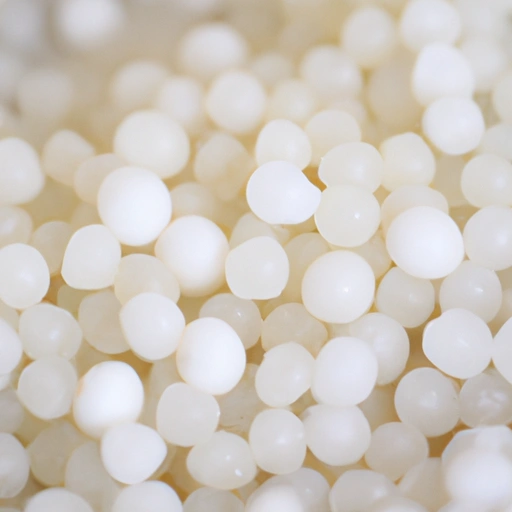Tapioca
Description

Tapioca is a starchy product made from cassava, a root vegetable native to South America. It is a fundamental ingredient in both sweet and savory dishes worldwide, known for its neutral flavor and gelling properties. Tapioca comes in various forms including flour, pearls, flakes, and beads, making it a versatile thickener and texture enhancer in cooking and baking.
Common uses
Tapioca is commonly used as a thickening agent in soups, sauces, and gravies. It is also a key ingredient in puddings, bubble tea, and gluten-free baking. The pearls and beads are often used in desserts, while the flour and flakes are more likely to be incorporated into savory dishes and baked goods.
Nutritional value
Calories
Per 1 ounce (28g / about 2 tablespoons), tapioca provides approximately 100 calories.
Protein
Tapioca contains a minimal amount of protein, offering less than 1 gram per ounce.
Fat
This ingredient is virtually fat-free, containing less than 0.1 grams of fat per ounce.
Carbohydrates
Tapioca is high in carbohydrates, with about 26 grams per ounce, mostly in the form of starch.
Vitamins
Tapioca is not a significant source of vitamins, containing negligible amounts of essential vitamins.
Minerals
While low in minerals, tapioca does provide small amounts of iron and calcium.
Health benefits
As a gluten-free alternative to wheat and other grains, tapioca can be beneficial for those with celiac disease or gluten sensitivities. Its high carbohydrate content can provide quick energy and it may also aid in digestion due to its resistant starch content.
Potential risks
Consumed in large amounts, tapioca can contribute to weight gain due to its high caloric and carbohydrate content. It is also low in overall nutritional value, lacking significant amounts of fiber, protein, vitamins, and minerals.
Common recipes
Tapioca is featured in recipes ranging from Brazilian cheese bread (pão de queijo) to Asian bubble tea, as well as in fillings for pies, fruit cobblers, and classic tapioca pudding.
Cooking methods
Tapioca pearls must be soaked or boiled to become translucent and gelatinous. Tapioca flour can be used in baking or as a thickener once dissolved in liquid.
Pairing with other ingredients
Tapioca pairs well with dairy products in puddings and bakes, with fruit in desserts, and with herbs and spices in savory dishes.
Summary
Tapioca, a product derived from the root of the cassava plant, has a rich history and is widely used in various global cuisines today. With its neutral taste and gelling abilities, it serves as a versatile ingredient in both sweet and savory dishes, offering a gluten-free option for those with dietary restrictions. Though low in protein and other nutrients, it is a source of quick energy and can assist in digestive health.